Canada’s north lures curious travellers on awe-inspiring adventures

This article is brought to you by Adventure World.
You’ve ticked off some of the world’s most incredible wildlife adventures. Perhaps you’ve peered through the mist to admire gorillas in Rwanda. You’ve possibly hiked somewhere dramatic like Alaska’s high country looking for caribou and moose. If you’ve an interest in Polar travel it’s likely you’ve laughed at comical penguins on the Antarctic Peninsula or applauded the salmon-hunting prowess of grizzly bears in Alaska.
Yet, have Canada’s wild places ignited your soul? Got your blood pumping and your heart racing? Have you stared into the soulful eyes of a polar bear? Or watched the mist from a bear’s breath dissipate into thin air? Have you followed in the footsteps of the world’s largest carnivore, whose paws are the size of dinner plates? No? Stay with me and read on.
Viewing polar bears in the wild, on their terms, is one of the rarest of experiences. Yet, in Canada’s north, it is actually pretty easy to see these apex predators up close and very personal.
Just ask the 1000 or so intrepid residents of Churchill, Manitoba, who share their home with a similar number of polar bears, particularly during seasonal changes. The remote outpost of Churchill, approximately 2000km north of Winnipeg, grew from an 18th century fur-trading outpost. The world’s oldest commercial operation, Hudson’s Bay Co which was founded in 1670, was long established by the time commercial fur trading peaked. Artefacts thousands of years old, such as kayak stands and tent rings from semi-nomadic Inuit people who traded furs, have been found around Churchill.
Bears of Churchill
Today, Churchill is known as one of the best places in the world to see polar bears. Tundra buggies are the chariot of choice for savvy travellers. These specially designed vehicles easily traverse the rugged terrain beyond Churchill, allowing travellers to view polar bears up close and in complete safety on a Classic Churchill Polar Bear Adventure.
Churchill is known as the Polar Bear Capital of the World for good reason. There’s even a polar bear ‘jail’, a holding facility which helps humans and bears to co-exist in safety. Churchill sits smack bang in the middle of the polar bear highway – the natural path that bears take moving to and from the ice on Hudson Bay. During the winter months bears hunt seals on the frozen bay. As the ice melts during the warmer months, they are forced ashore to hunt for food on land. Churchill just happens to be in the way of hungry bears trying to survive. Bears which become a little too familiar and begin to associate human habitats and their discarded rubbish as a food source are held in the holding facility until the sea ice returns and they can be safely relocated to their natural environment.
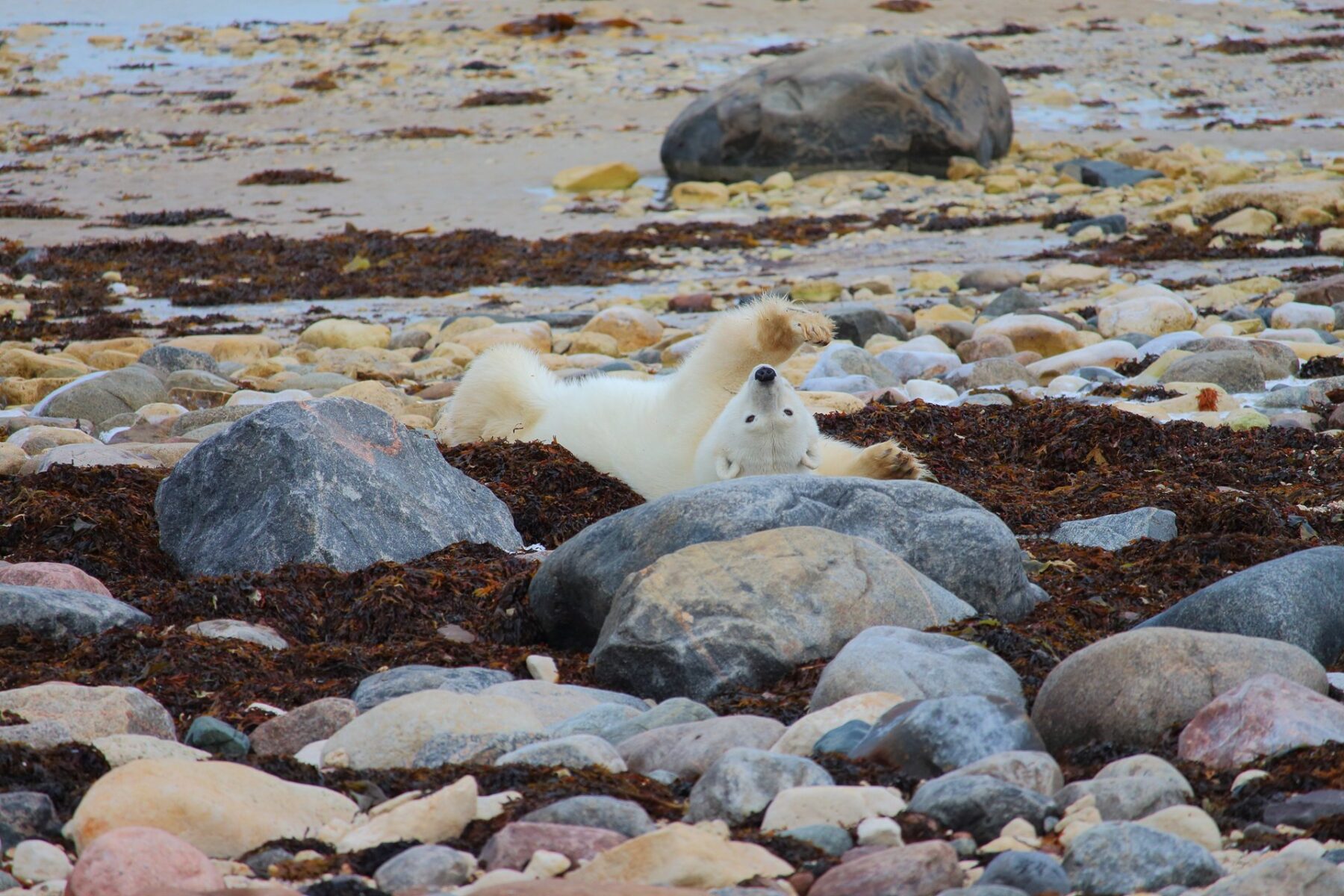
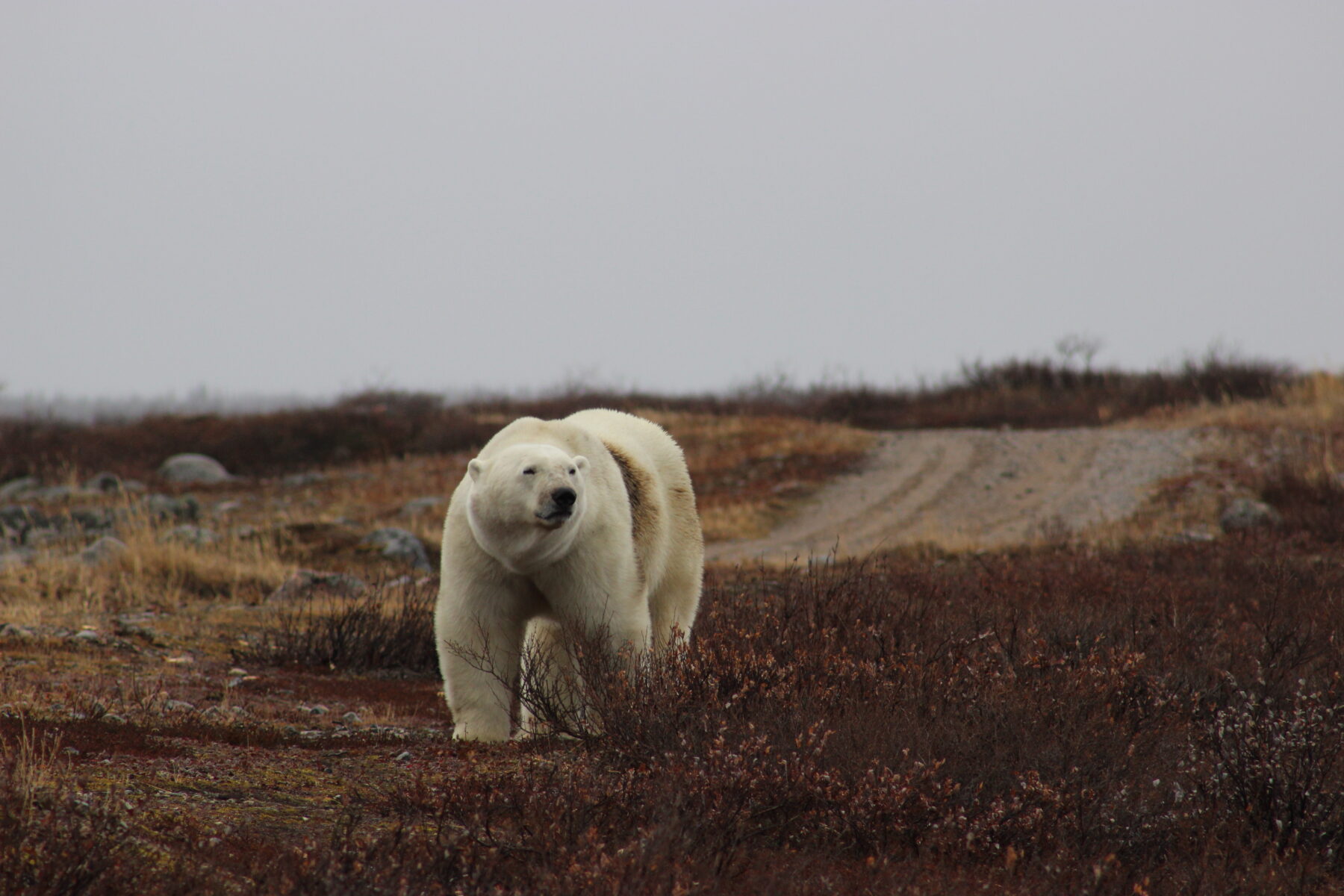
The brutal truth is, polar bears need our help. Numbers are in decline as the ice melts earlier each year, depriving bears of essential hunting grounds. Partnerships between Adventure World and non-profit organisations like Polar Bear International (PBI) help to halt the decline of the species. According to Polar Bear International, approximately 20,000 to 26,000 polar bears remain in the world. That’s a drop of 27% in five years, according to a 2021 Canadian government survey. Adventure World’s itineraries such as Polar Bears at Tundra Buggy Lodge or Canada’s Big Five Safari contribute to the ongoing protection of these magnificent creatures and their natural habitat.
Belugas at play
Canada’s north is home to many Arctic wildlife species, some are endemic, and all rely upon an unspoilt environment in which to thrive. During the summer months it’s possible to see curious beluga whales which aggregate in the shallow waters of Churchill river on Adventure World’s Belugas, Bears & Blooms itinerary. Here, in the southern reaches of Hudson Bay, bump-headed belugas are masters of disguise during the winter when their Arctic-hued skin blends in with the icy seascape. Not so much during the summer, when their whiteness and comical grins makes them a photographer’s favourite. Belugas are vocal creatures too (which kind of blows their cover), chirruping and chirping incessantly, which instigated the affectionate moniker of ‘sea canaries’. They use Churchill River as a breeding nursery where they feed, mate and give birth in the warmer waters before returning to icy northern waters as winter descends.
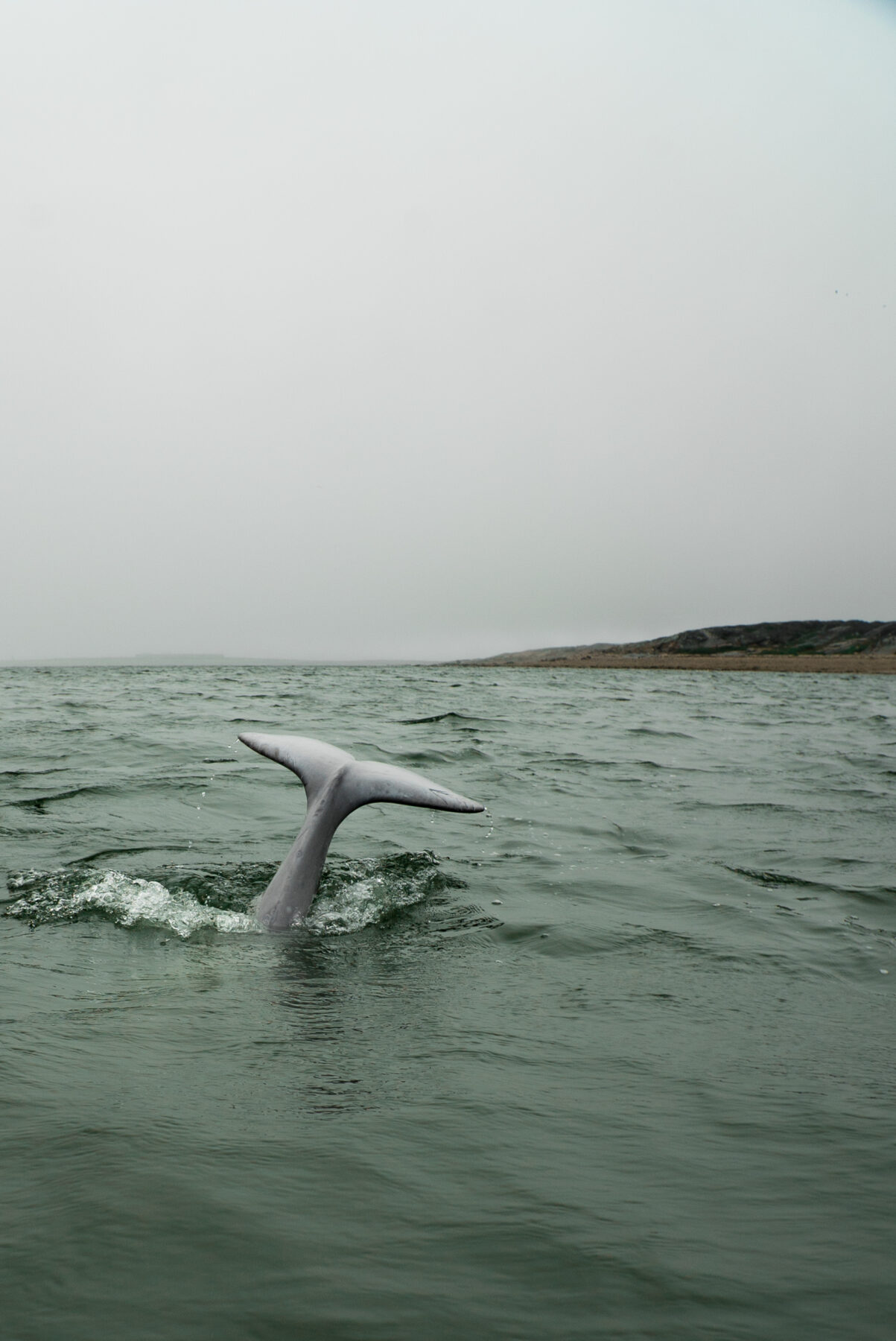
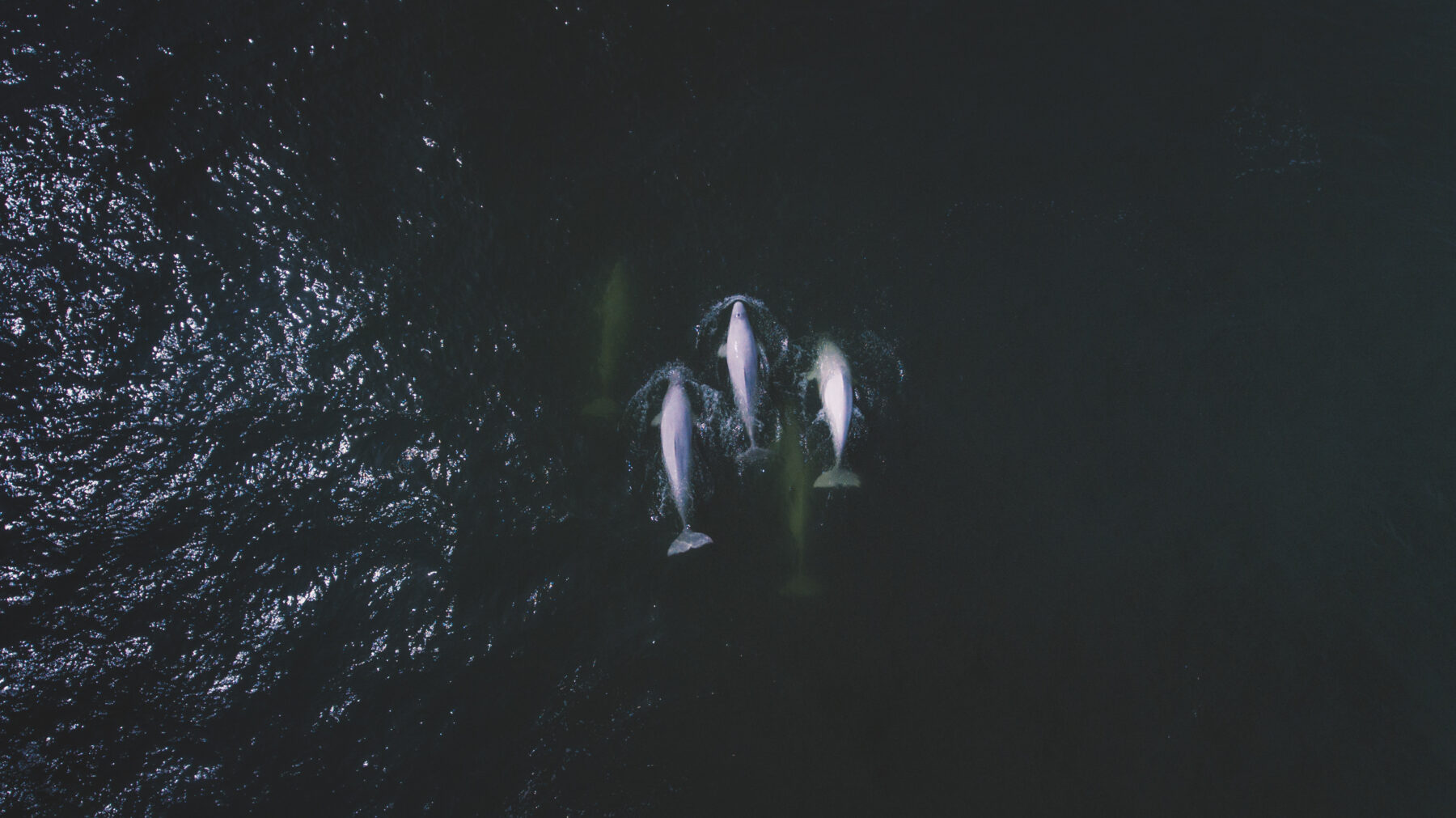
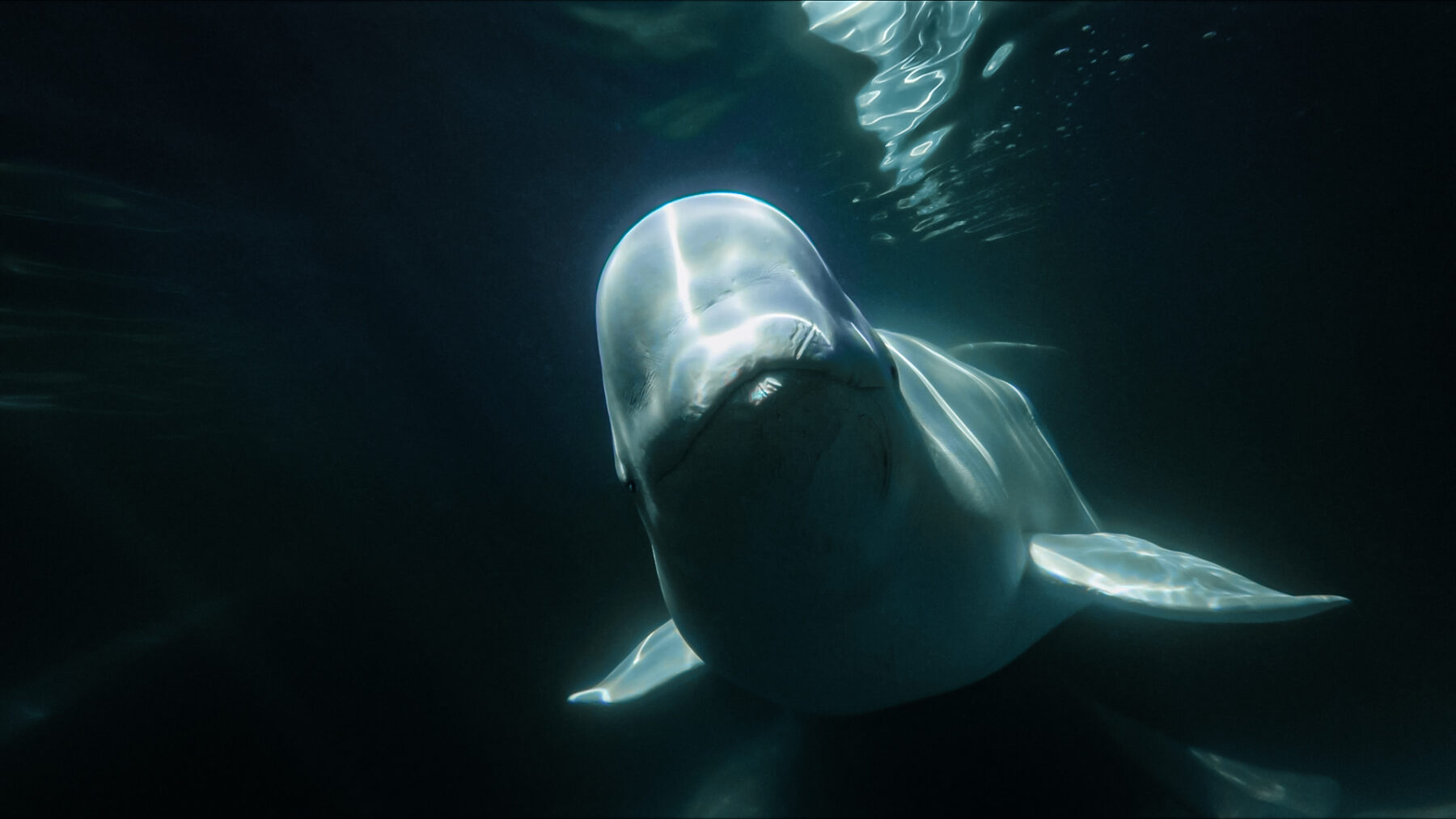
Ribbons of light
While belugas are migrating northwards, humans too are lured north in winter. To Yukon to be precise. The reason? It has nothing to do with belugas, nor bears. Rather, the attraction is atmospheric. The Aurora Borealis, otherwise known as the Northern Lights, lures travellers to Yukon’s wide-open skies for the best possible chance to view this natural phenomenon. Adventure World’s Yukon Winter Dream itinerary puts you front and centre from your Whitehorse base. When not admiring the dancing curtains of light, you’ll likely be readying yourself for a thrilling insight into the toughest dog sled race in the world.
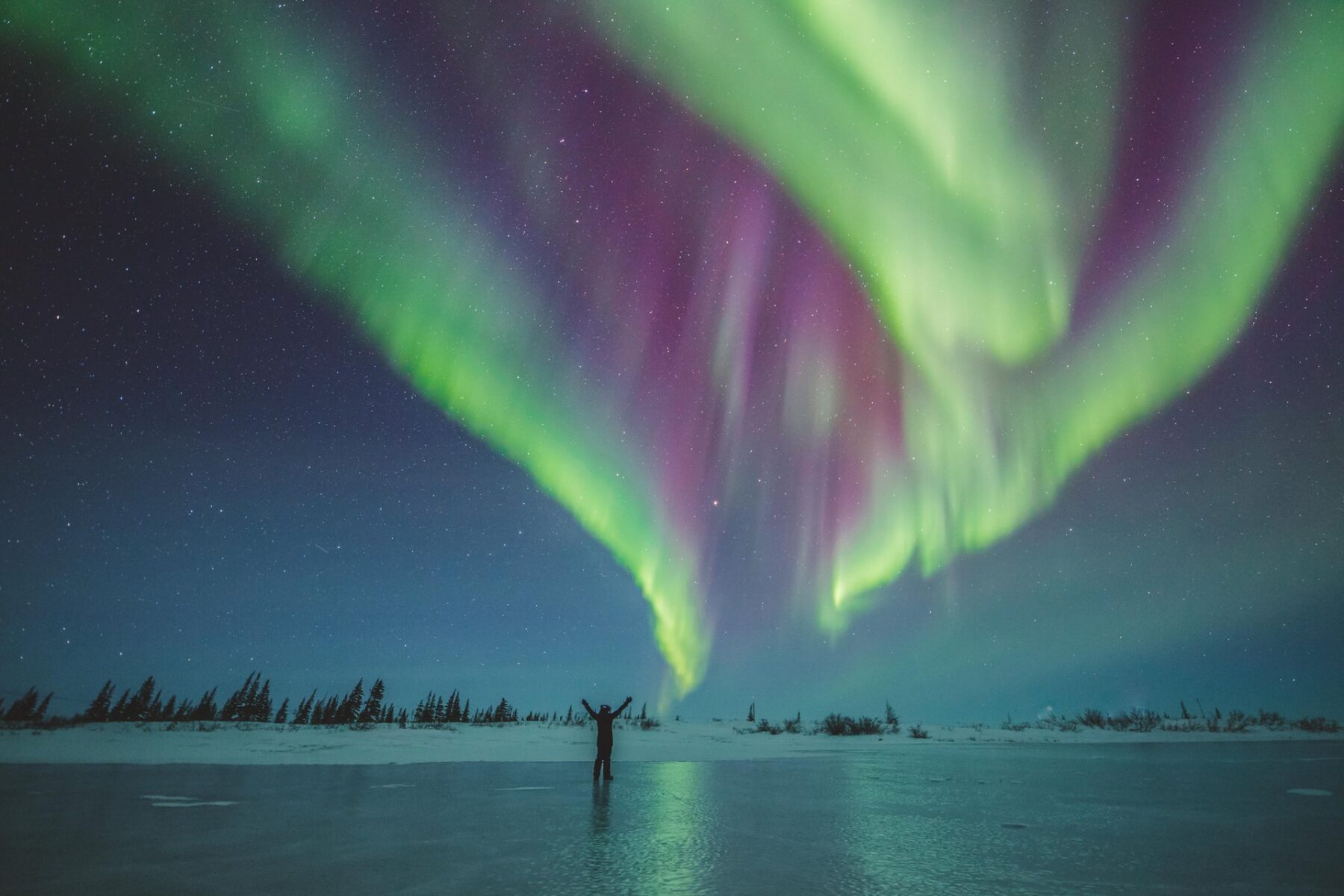
Nature’s most coveted light show is generally visible from mid-August to mid-April, while the best time to see them is during the first few weeks of winter, when clear dark skies make ideal viewing conditions. Winter in Yukon is also the best time to experience the thrill of snow mobiling and mushing, or dog sledding. Mushing has a long history in Canada’s North, when the only way to move around has traditionally been by using dog team transportation. It’s how news was passed between remote communities and supplies were delivered. In some communities it’s still the most reliable link between far-flung outposts.
The international sled dog race, the Yukon Quest, grew out of the tradition of mushing, with racers covering a 1000-mile route between Whitehorse, Yukon and Fairbanks, Alaska. The race traverses what is arguably some of Canada’s most beautiful, yet unforgiving, terrain. But fear not, you won’t have to undertake such an endurance feat. After a session learning the ropes on a mushing adventure, the only thing you need be concerned about is which hot springs to soak in, or what time the Northern Lights are likely to appear.
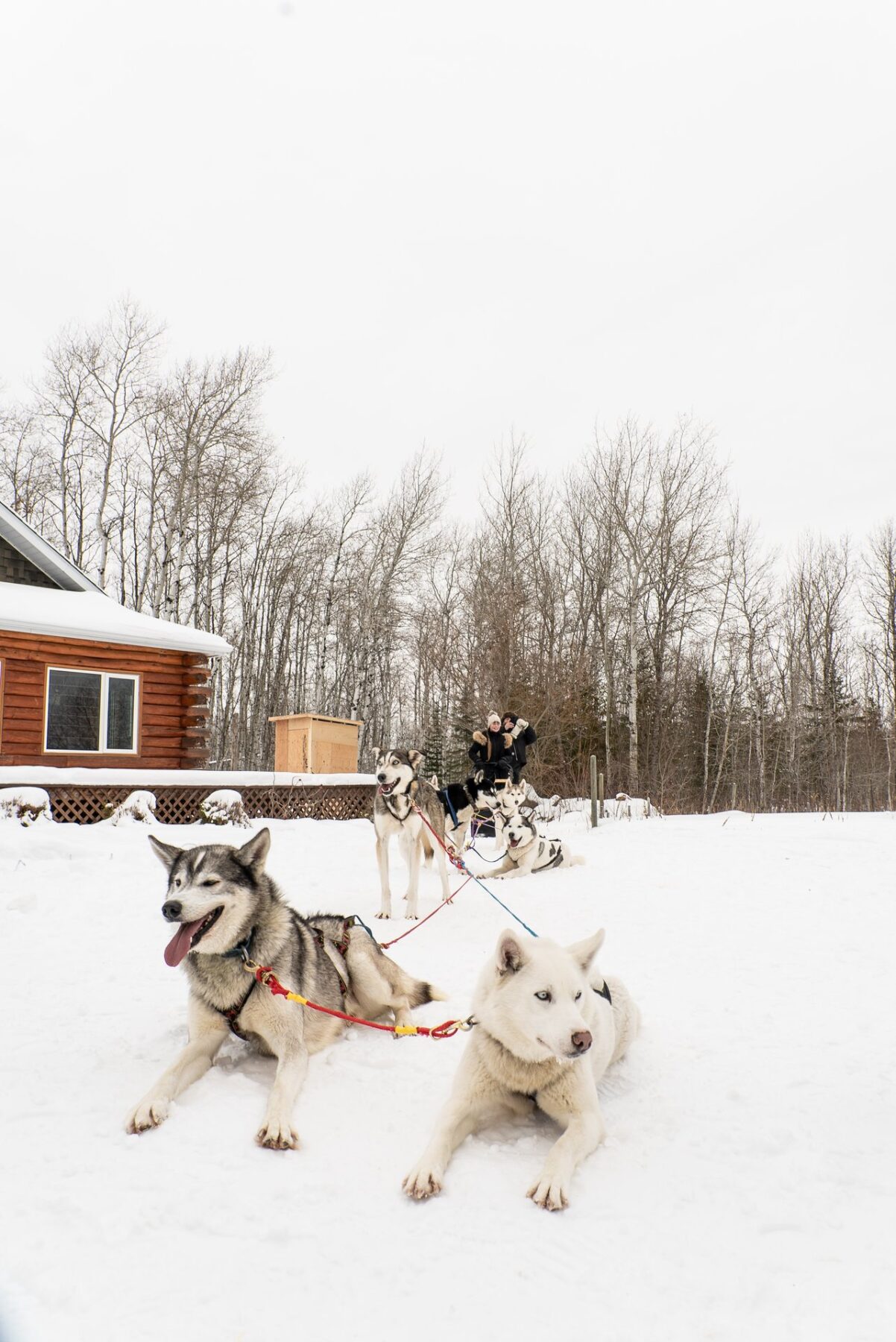

Like much of Canada’s North, some of the experiences you’ll encounter here are like nowhere else on this planet. There’s only one polar bear jail. There’s only one Tundra Buggy Lodge. The Northern Lights dance across Yukon’s skies in vivid curtains of colour. There’s only one way to see Canada: on an Adventure World authentic, custom-made journey. Unlike those recalcitrant polar bears who likely regret the decision to forage through Churchill’s rubbish bins, you won’t regret your visit to Canada’s North.
Discover extraordinary adventures with Adventure World. We’re travellers like you, offering authentic experiences. Let’s explore together!
Unlock the world with Adventure World – your passport to extraordinary adventures.
This article is brought to you by Adventure World.

